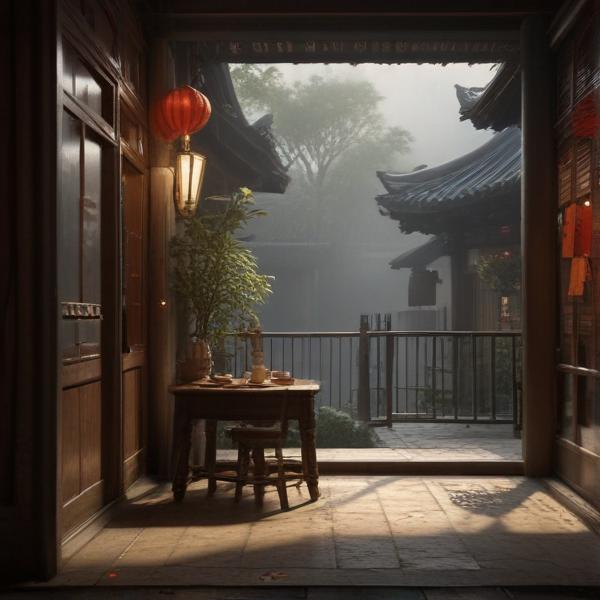基本信息 (Basic Information)
含义与用法 (Meanings & Usage)
中文核心释义 (Core Chinese Meaning): 年长的女性,常指“保姆”“姨妈”等,现代多用作女性长辈的称谓或作为“母”的俗体,泛指女性。
英文核心释义 (Core English Meaning): elderly woman; nursemaid; nanny; often denotes a female elder or a woman in certain familial or social roles.
象形意义 / 为何这么写 (Pictographic Meaning / Writing Rationale)
文言文释义 (Classical Chinese Meaning)
与现代意义相近,主要指女性长辈、乳母等。Similar to modern meaning, mainly referring to a female elder or wet nurse.
深入学习 (In-depth Study)
字源故事 (Origin Story)
字形演变 (Character Evolution)
常用词语和例句 (Common Words & Examples)
保姆 (nanny; housemaid)
他们请了一位保姆照顾孩子。
Eng: They hired a nanny to take care of their child.
师姆 (wife of one's teacher (traditional respectful term))
我们去给师傅和师姆拜年。
Eng: We went to pay New Year’s greetings to our teacher and his wife.
相关成语 (Related Idioms)
相关成语信息待补充。Related idiom information pending.
多语言翻译 (核心释义) (Translations (Core Meaning))
- French: Nourrice, femme aînée
- German: Amme, ältere Frau
- Spanish: Nodriza, mujer mayor
- Italian: Balia, donna anziana
- Portuguese: Ama de leite, mulher idosa
- Russian: Кормилица, пожилая женщина
- Arabic: مربية، امرأة مسنة
- Persian: دایه، زن مسن
- Dutch: Voedster, oudere vrouw
- Polish: Mamka, starsza kobieta
- Vietnamese: Vú nuôi, phụ nữ lớn tuổi
- Ukrainian: Годувальниця, літня жінка
视频学习资源 (Video Learning Resources)
通过以下链接在热门视频网站搜索 "姆" 的更多讲解:
Search for more explanations of "姆" on popular video sites:
- 在 Bilibili.com 搜索 "姆 字源 说文解字" (Search on Bilibili)
- 在 YouTube.com 搜索 "姆 character origin etymology" (Search on YouTube)
网络参考 (Web References for "姆") ()
网络内容摘要 (Web Content Summary):
“姆”字核心含义:“姆”主要表示年长的女性,尤其指保育、照顾小孩的女性,如“保姆”。汉字“姆”通常和家庭、育儿等语境相关。Core meaning of "姆": "姆" generally refers to an elder woman, especially a woman responsible for nurturing or caring for children, as in “保姆” (nanny). This character is often used in contexts related to family and childcare.
象形起源与结构: “姆”是会意字,左边“女”表示女性,右边“母”本义为母亲——组合起来表示女性长辈或养育者,体现了女性关怀和抚养的角色。Pictographic origin & structure: "姆" is an ideogram: on the left, "女" (woman/female), and on the right "母" (mother). Together, they depict a female elder or caretaker, highlighting the nurturing role of women.
- 常用词: “保姆”(nanny),意思是照顾小孩或负责家务的女性。“师姆”历史上指老师的妻子。Common words: "保姆" (nanny; woman who cares for children/household). "师姆" historically referred to a teacher’s wife.
- 易混淆点: “姆”与“母”(mother)字形接近,但“姆”特指非亲生母亲的照顾者、长辈,而“母”主要指生物上的母亲。Easily confused: "姆" is visually similar to "母" (mother), but "姆" specifically refers to female caretakers or elder women other than one’s biological mother.
成语与文化背景: 目前没有以“姆”为核心的常用成语,“姆”常见于口语和生活场景。Idioms & cultural background: There are no widely used idioms centered on "姆", but it frequently appears in everyday speech and family-related contexts.
信息补充: 当前“姆”的相关文化和象形信息较为有限,主要用作表意偏旁或组合词出现。Additional notes: Available information on the cultural or pictorial origins of "姆" is limited; it is mostly used as a semantic component or in compound words.
姆的字源字形 - 漢典
據統計,其文約有3,005字,可辨識者,計有1,804字,比甲骨文略多。由於商周盛行青銅器,而青銅禮器以「鼎」為代表,樂器以「鐘」為代表,因其刻於金器、大鐘上故稱之金文,亦因而得"鐘鼎文"之名。 返回「姆」字
姆《汉字字源》_汉字「姆」_姆在汉字字源中的解释 - 国学大师
姆《汉字字源》,汉字「姆」,姆在汉字字源中的解释,国学大师,汉语字典 明清实录 | 二十四史 | 四库全书 | 古今图书集成 | 历史人物 | 说文解字 | 成语词典 | 甲骨文合集 | 殷周金文集成 | 象形字典 | 十三经索引 | 字体转换器 | 篆书识别 | 近义反义词 | 对联大全 ...
更多图片 (姆 More Images) ()
